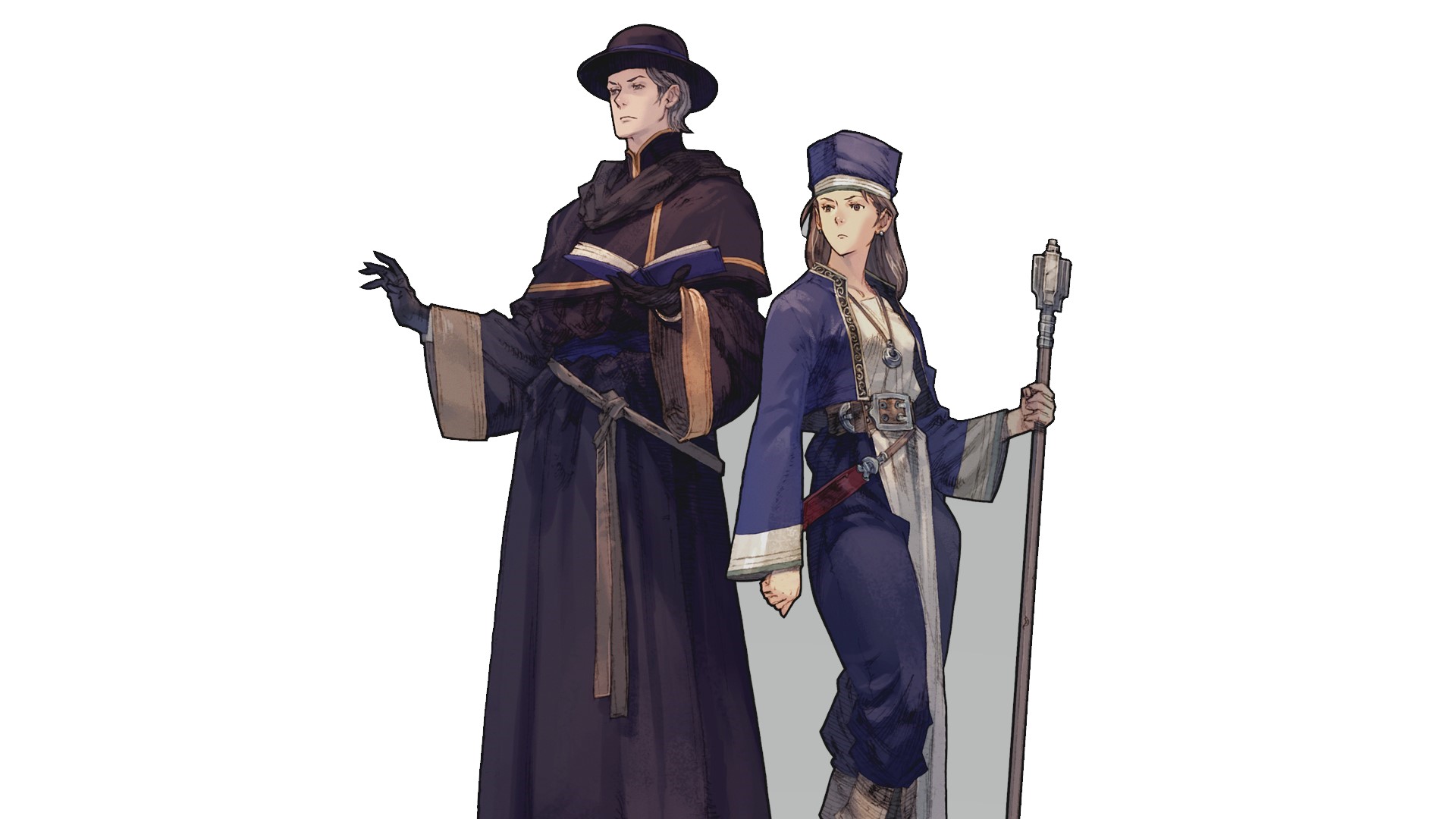The way this RPG remake makes you care about your soldiers is so smart
Against ogrewhelming odds

It’s the dead of night and my soldiers are hunkered down between two mausoleums, bottlenecking the enemy necromancer’s forces into a single-file charge. The plan works for the first few turns, with undead troops falling before my line’s spears and swords, until one of the skeletons breaks through and brings its bony mitts down on one of my brave spearwomen. An ominous countdown appears above her prone body. This was how long I have to finish the battle before she bleeds out, dying with no hope of revival.
At this moment, I have to change my plan; I can no longer exhaust the necromancer’s army in drips. I charge my troops up the map, into the thick of her forces. With steel, sweat, and sinew, we turn the battle and end the necromancer’s sorry life with only one turn to spare. This is the magic of Tactics Ogre, so effectively and lovingly rendered in Tactics Ogre Reborn for Nintendo Switch.

Tactics Ogre is almost as old as I am, released back in 1995 (the game, not me). Yet its emphasis on player actions, and their permadeath-laden consequences, is just as powerful today as it was in the mid 90s.
You take on the role of a young, partisan leader called Denam in a battle to liberate his people from the yoke of oppression. For this, he needs an army. However, there’s much more to Tactics Ogre Reborn than the trials and tribulations of rank-and-file soldiery. Every decision you make takes place against the backdrop of a wider tale: a sprawling fantasy epic with branching storylines and weighty player choices. My fraught battle against the undead didn’t take place in a vacuum; rather it was one of the first steps of a prolonged campaign.
To take up arms

You start your journey by recruiting your first crop of followers, outfitting them with the best equipment you can. As one of the Duke’s knights says early on: the difference between life and death can be as simple as the canny purchase of a “magicked ring”.
That plate-clad busybody wasn’t wrong. Tactics Ogre uses permadeath to punish your missteps. If any of your soldiers are left incapacitated for three turns, they die. It really crept up on me, how invested I became in my army. It started small, but even in the early stages of the game, I’d invested time and resources into levelling and equipping my spearwoman – of course I didn’t want her to die.
As the campaign continued, my spearwoman began to feel indispensable.
Our fight against the Necromancer didn’t come out of the blue. Denam was tasked with dealing with the local nuisance by Duke Ronway, leader of the resistance, as a part of his wider plan to emancipate the people. As the campaign continued, my spearwoman began to feel indispensable. I lost track of the times her savvy combination of healing magic and spear work had broken the charges of our enemies. I would (and did) throw my whole army into danger to save her.
Sign up for breaking news, reviews, opinion, top tech deals, and more.
Necessary losses

This kind of investment adds a fraught layer of emotional calculus to an already complex and challenging tactical melange. In deciding to push toward the necromancer in the hope of saving my dying comrade, I took a risk. I not only risked the lives of other soldiers, but also the integrity of the Duke’s mission. Had the risk been greater, had we been outnumbered or on the back foot, I may have left her to die so that the mission could be a success.
Thanks to the overarching story, the lives of the soldiers are simultaneously made so much smaller and so much more important.
Tactics Ogre blends the small-scale and the large-scale beautifully. Thanks to the overarching story, the lives of the soldiers are simultaneously made so much smaller and so much more important. You’re forced to weigh the lives of your soldiers against the lives of their comrades, as well as the greater cause for which you fight.
Despite having gone to extreme lengths to save my spearwoman, my experience fighting the necromancer made it clear that I had to make peace with the possibility that any of my soldiers might not make it back. The title of Tactics Ogre’s first chapter says it all: “There is blood on my hands, how long till it lies on my heart?”

An editor and freelance journalist, Cat Bussell has been writing about video games for more than four years and, frankly, she’s developed a taste for it. As seen on TechRadar, Technopedia, The Gamer, Wargamer, and SUPERJUMP, Cat’s reviews, features, and guides are lovingly curated for your reading pleasure.
A Cambridge graduate, recovering bartender, and Cloud Strife enjoyer, Cat’s foremost mission is to bring you the best coverage she can, whether that’s through helpful guides, even-handed reviews, or thought-provoking features. She’s interviewed indie darlings, triple-A greats, and legendary voice actors, all to help you get closer to the action. When she’s not writing, Cat can be found sticking her neck into a fresh RPG or running yet another Dungeons & Dragons game.